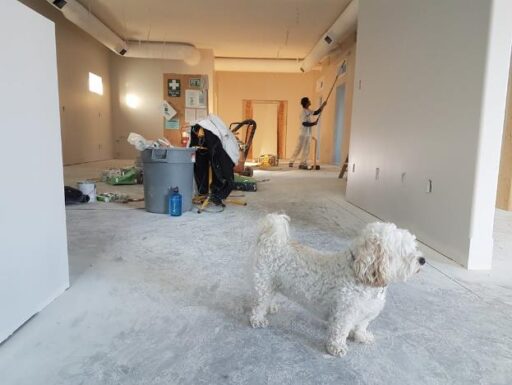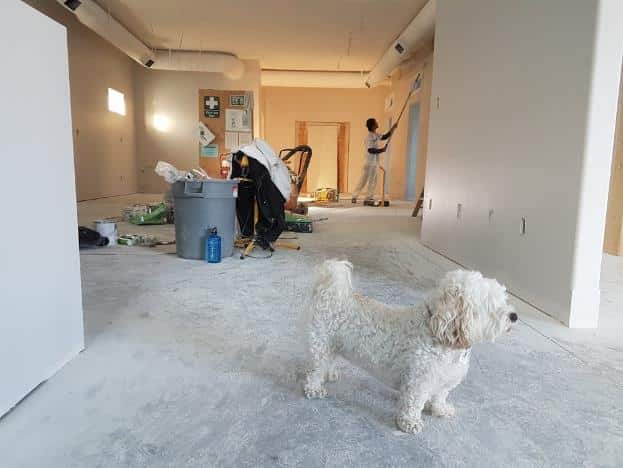Ever had a burst of inspiration, ripped something out of your house, and then realized you had no plan for what came next?
It’s a common misstep. Home improvement starts as a burst of motivation but quickly becomes a logistics marathon filled with budget puzzles, scheduling chaos, and second thoughts about paint colors. Planning is what separates an upgrade from a money pit. In this blog, we will share what to do before you begin your next home improvement project—because the prep matters as much as the work.
You Need More Than a Vision Board
Ideas are easy to fall in love with. You scroll through glossy photos, imagine open spaces, picture yourself living in the finished product, and suddenly your current home feels like it’s taunting you with every outdated tile and creaky cabinet. But the gap between wanting change and being ready for it is wide—and skipping the planning phase is the fastest way to waste money, time, and patience.
Right now, home improvement is having a moment. High mortgage rates are pushing homeowners to stay put, which means more people are investing in upgrades rather than buying new. That’s led to a spike in demand for skilled labor and materials, both of which are harder to book and more expensive than they were even three years ago. Good planning doesn’t just help with timelines. It protects your project from market volatility and bad decisions that you can’t afford to fix later.
Before you knock down anything, figure out where your priority lies. Do you need better function, better aesthetics, or both? Then look at the scope. Are you making one room more livable or restructuring how your home actually works? Be honest about your limits. Not just your budget—but your time, patience, and ability to function in a house that’s mid-construction.
The deeper you go, the more the details matter. If you’re focusing on essential living spaces, like bathrooms, there’s no room for guesswork. You’ll want a licensed bathroom remodeler who understands both design and plumbing. These jobs are never just cosmetic. You’re dealing with moisture, drainage, building codes, and expensive materials packed into a tight space. One wrong measurement can turn a stylish renovation into a costly repair. Choosing the right professional helps you avoid all of that, and ensures the job gets done right the first time—with clear timelines, proper permits, and real accountability.
Budget Realistically—Then Add Breathing Room
People lie to themselves about home improvement costs more than they do about gym memberships. It’s easy to believe your spreadsheet will hold when you’re staring at big, round estimates on a screen. But projects never unfold in neat numbers. Unexpected issues—hidden mold, damaged wiring, structural surprises—don’t ask for permission before inflating your final bill.
The most common budgeting error is planning for best-case pricing. That’s the fastest way to end up halfway done with no money left. Instead, start with a range. Set your ceiling, but also create a “working budget” that’s about 70 to 80 percent of that total. The remaining percentage isn’t optional padding—it’s survival money when things go sideways.
Also, count the costs beyond the project itself. Will you need to stay elsewhere during demolition? Will you be eating out for two weeks because the kitchen’s torn apart? These costs aren’t glamorous, but they’re real. Ignoring them doesn’t make them disappear.
Labor also plays a huge role in budgeting. Right now, skilled trades are in high demand. Many contractors are booked out for weeks or months. Trying to cut corners by hiring someone cheap often leads to slower work, uneven quality, or repairs down the road that cost more than if you’d just paid for experience upfront.
Permits Are Not Optional, Even If You Think They Should Be
There’s a strong urge to skip permits, especially if you’re working inside your own home and think no one will notice. But permits aren’t just red tape. They protect you legally, ensure the work meets safety codes, and prevent headaches if you ever want to sell the house or make insurance claims. Cities are tightening enforcement because so many homeowners took on projects during the pandemic that weren’t inspected, and in some cases, weren’t even safe.
Check with your local building department before doing anything structural, electrical, or plumbing-related. Even some cosmetic changes, like window replacements or major floor plan shifts, require formal review. Don’t assume you know what’s covered. Look it up. Call. Ask. Document. It’s better to delay the project than rush into it without knowing the rules.
If you’re using a contractor, they should handle the permitting—but ask to see the paperwork anyway. The responsibility ultimately falls on the homeowner, and “they told me it was fine” won’t protect you if your city decides to do an inspection after the fact.
The Real Goal Isn’t Just Better Space—It’s Fewer Regrets
Every home improvement decision carries a ripple effect. What you change today shapes how you live tomorrow, and what you overlook now could turn into the frustration that lives with you for years. Planning isn’t just about avoiding mistakes—it’s about designing results you won’t second-guess every time you walk through the room.
The trend right now is toward intentional upgrades. People aren’t chasing square footage or resale boosts as much as they used to. They’re investing in usability, comfort, and long-term value. If you’re going to spend money and time to change your home, make sure the result feels like it was worth it—not just on paper, but in the way it actually supports your life.
So start slow. Get detailed. Ask uncomfortable questions now to avoid bigger problems later. When the planning is solid, everything else—timeline, budget, stress—stays within reach. Not perfectly smooth. But manageable. And that’s the difference between a project that works and one that just wears you down.







![Best Contour Memory Foam Pillow [The Ultimate Buying Guide]](https://cdn.enthrallinggumption.com/wp-content/uploads/2025/08/slaapwijsheid-nl-4hr8GcsUZOA-unsplash-512x288.jpg)
